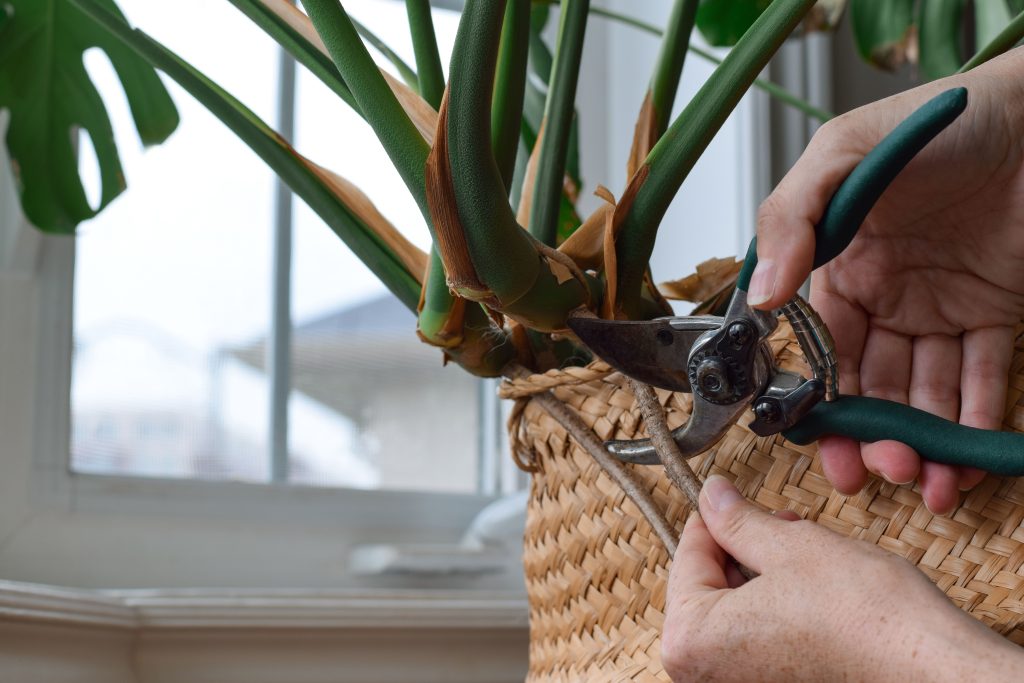:max_bytes(150000):strip_icc():format(jpeg)/GettyImages-1510079138-acbabc23143a443d9f24a7c9f8042e62.jpg)
Everyone loves monstera plants. They’re the star of many an Instagram jungle, and their huge, shapely leaves have become an avatar for tropical houseplants. However, not everyone loves the aerial roots, those brown, woody appendages that grow from the nodes on the plant’s stem. So can you cut off those roots or is it better to leave them alone? Here’s what houseplant pros advise.
- Paris Lalicata is a plant education and community engagement associate at The Sill plant shop based in New York.
- Carlie and Jason Paluzzi are co-founders of BWH Plant Co. in Orlando, Florida.
What Do Aerial Roots Do?
In the wild, monsteras are climbers, and their aerial roots help the tropical vine attach to trees and pull itself up into the sunlight. Aerial roots also contribute nutrition to a monstera because they absorb water, carbon dioxide, and nutrients from the air, supplementing the water and nutrients the monstera gets from its roots in the soil.
Why to Cut Off the Aerial Roots
A monstera’s aerial roots can grow fairly long, according to Paris Lalicata, a plant education expert at The Sill. “They can cascade down from the plant and exceed the height of the pot. Some people like the way they look, others don’t,” she says.
Plus at home, you probably don’t want a plant that climbs up walls and covers a room with 60 feet of vines and giant leaves. So, the aerial roots aren’t necessary to help support your monstera. If you’d prefer to snip them off, “Removing them won’t affect the health of the plant, and they’ll grow back after you cut them,” Lalicata says.
“Cutting them off is purely an aesthetic choice,” agrees Carli Paluzzi, co-founder of BWH Plant Co. “Some people think a monstera looks tidier and less cluttered without the aerial roots and choose to trim them off.”
Benefits of Leaving Aerial Roots
Monstera plants get most of their nutrition from their underground roots, so your plant won’t starve if you cut off the aerial roots. It will do fine in a container of potting soil with semi-regular fertilizing. However, if you tend to be forgetful about watering, “I recommend keeping those aerial roots because they can help maximize moisture absorption for the plant,” Lalicata says.
And if you want to encourage your monstera to climb and be a statement plant, leaving the aerial roots on the plant makes it easier to train them to grow on a moss pole or trellis. You also can let them attach to a wall if you don’t mind the roots taking off some paint.
Jason Paluzzi, Carlie’s husband and the other co-founder of BWH Plant Co., suggests sticking the aerial roots into the soil of the container to help stabilize the plant. “They’ll help a monstera grow upright instead of horizontally,” he says.
Those aerial roots are impressive structures—part mouth and part hand. They can pull the plant up a tree or trellis and absorb nutrients and water from the soil or the air. Consider keeping them on your plant as a reminder of how adaptable the natural world can be.

